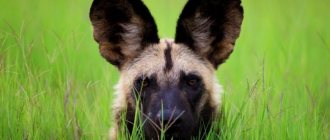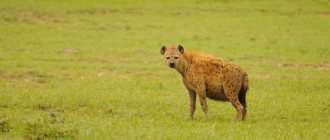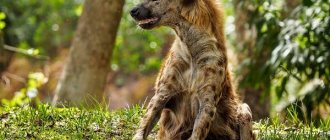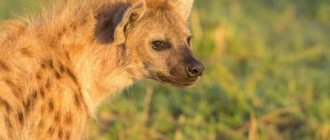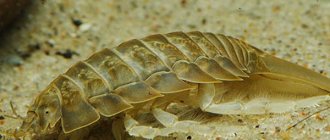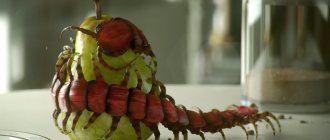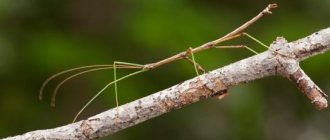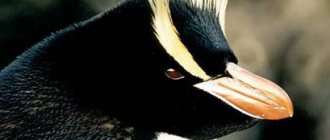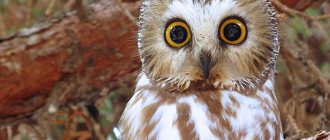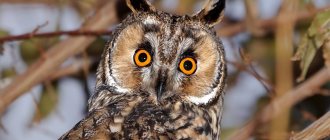Hyena (lat. Hyaenidae) is a wild mammal that is similar in appearance to a dog or wolf. Hyena family, suborder Felidae, order Carnivora. If translated from Latin, the name can be translated as pig or wild boar. This is due to the physiological characteristics of hyenas, namely the bristly back and the unpleasant odor that these animals emit.
general description
Hyenas are one of the unusual and interesting animals that can be found in the steppes, foothills of the African continent, and savannas. Because of their appearance and behavioral characteristics, many people treat them with disdain. However, these animals are orderlies for the desert regions of Africa, savannahs, foothills, and plains. They maintain the natural balance in nature by hunting small animals and destroying the remains of other living beings.
Spreading
The spotted hyena is indigenous to the African continent. It is widespread in sub-Saharan Africa. Present in almost all places, with the exception of deserts, tropical forests and alpine peaks. But the distribution density is not uniform. This is especially true in West Africa. A large number of these animals live in Ethiopia, Kenya, Tanzania, Botswana, and Namibia.
Spotted hyena in the steppe
The natural environment is semi-desert, savannah, open forest consisting of dry forest and mountainous forested areas up to 4 km above sea level. There are no animals in densely wooded areas. This predator outnumbers other large African predators. This species is also the most numerous among other types of hyenas. The population density of these animals is constantly changing and ranges from 0.006 to 1.7 individuals per 1 square meter. km.
Appearance
The hyena is a fairly large predator. The average body length is 165 cm, height 90 cm (at the withers). The weight of females reaches 64 kg. The weight of males rarely approaches 55 kg.
The color of the fur differs depending on the type of hyenas, as well as their age. The most popular shades are yellowish-gray and grayish-brown. The general background is complemented by spots, which can be of various shades and sizes. Brown rings can be seen along the entire length of the tail, and the tip is black. The nose and lower jaw are black, the hair on the paws is lighter than the shade of the hair on the body.
Types of hyenas
In nature you can find 4 types of hyenas:
Striped animals are large mammals. Body length – 150 cm, height at withers – 80 cm (average parameters). In this species, males are larger than females. The average length of the coat is 7 cm. The coat can be brown-yellow or dirty gray. It has stripes that run across the body. The ears of spotted hyenas are sharp, wide, the skull is massive, slightly elongated. Favorite habitats are rocky foothills and clay deserts. They hunt at dusk and at night. When it is daytime, striped hyenas hide in caves, burrows, and gorges. One of the features of this breed is that its representatives live not only in Africa.
Striped hyena
Spotted are typical representatives of this family. The body length of spotted hyenas is up to 1.6 meters, height at the withers is 80 cm. Males are significantly smaller than females. Their average weight is 50 kg. The weight of females can reach 85 kg. The coat can be sandy or yellow-gray in color. On top of the coat there are spots of various sizes, black or dark brown. One of the differences from other species is short ears with rounded tips. When communicating with other individuals in the flock, they use the largest number of sounds. They mainly hunt in the dark. However, they can sometimes be seen in open areas during the day. Females dominate in flocks.
spotted hyena
Brown - compared to their striped counterparts, individuals of this species are smaller in size. Their body length does not exceed 120 cm, the average height at the withers is 70 cm. In size, females and males are almost identical. Males of brown hyenas are larger than females and can weigh up to 50 kg. The general coat has a brown-brown tint. The color of the legs and head is gray. Shoulders and neck are white. Brown hyenas have a larger skull than striped ones, and their teeth are much stronger. The predominant habitat zones are semi-desert and desert areas. Sometimes flocks of such predators can be found in forests and savannas. They hunt like their relatives - in the late evenings and at night.
Brown hyena
Aardwolves are the smallest representatives of hyenas. They have a fragile build. Body length is up to 100 cm, height at the withers is no more than 50 cm, weight rarely reaches 15 kg. In terms of the appearance of the head, aardwolves can be compared to dogs due to the elongated skull. The coat has a red or yellowish-gray tint, and there are black transverse stripes on the body. The jaws are underdeveloped, the teeth are not as strong as those of other species. This is due to the specific diet of aardwolves. They eat large beetles, larvae, and termites. There are 5 fingers on the limbs, which is another difference from other varieties of hyenas. Aardwolves spread throughout the southern and eastern regions of Africa. Animals prefer bushes and sandy plains. They search for insects at night, however, during the day they sit in earthen shelters, which they dig for themselves.
Aardwolf
Separate consideration should be given to the now defunct species Pachycrocuta brevirostris. These are extinct predators that were much larger than their living relatives. The average weight of these predators reached 110 kg.
Where do they live?
All the diversity of hyenas lives in Africa. They can be found in the foothills, semi-deserts, deserts, and savannas. Sometimes the habitats of individual species of predators overlap, which is why they have to share the same territory.
Most often, hyenas are found in Kenya, Sudan, Botswana, Namibia, and South Africa. As an exception, striped hyenas can be distinguished. They are often found in Central Asia, some flocks reach India.
Reproduction
Childbirth occurs 14 weeks after conception. The female brings up to 7 cubs, in central Africa at the beginning of the rainy period, in the north - in the spring; the cubs are placed in caves or dug holes. Cubs are born sighted and with teeth. The mother protects the offspring until they grow up. The cubs are covered with short, single-colored fur; no stains. The milk is so nutritious that the cubs can go without food for up to a week. Hyenas feed only their own offspring, but they can also look after the offspring of a female who is higher than them in the hierarchical level in the pack.
What do they eat?
Striped, brown hyenas are scavengers. But when there are problems with carrion production, they can feed on bird eggs, open nests, and catch small vertebrates and invertebrates.
Spotted hyenas hunt small animals; in packs they can drive large animals. If possible, they can take prey from leopards, cheetahs, and jackals. In situations where there are farms and private houses in the territory where predators are distributed, they can steal pets. Speaking of hungry times, spotted hyenas feed on food waste and carrion.
These predators have a very unpretentious, strong digestive system. She can even process bones. However, in addition to the flesh of killed prey and carrion, hyenas eat watermelons and melons if they can find them.
Relationship with competitors
Contrary to popular belief, it is not hyenas who try to take over lions' prey, but lions often take prey from hyenas. If there is only one lioness, and there are many hyenas, then they can try to drive her away, but several lionesses or even a single male lion can drive away the entire clan of hyenas from the prey. Lions also often kill hyenas and their cubs. On the other hand, old lions often find their death in the teeth of hyenas.
Leopards eat part of the caught prey, and drag the rest into trees to protect it from robbers. Often the prey hangs a little higher than the hyena can reach. In the vicinity of Luangwa, where there are too many hyenas, leopards prefer to kill small prey in order to immediately drag it up a tree and eat there. Leopard cubs should also be wary of hyenas.
Wild dogs hunt in the same places as spotted hyenas and with the same prey, but they hunt in a slightly more organized manner. On the other hand, hyenas have more carrion in their diet and are less susceptible to the rabies virus. These two predators often kill each other and the cubs of competitors. Hyenas often take away their prey from other predators, if it is on their menu, and hunt their cubs, and sometimes themselves. Hyenas can take away a hole from foxes and use it as a nursery.
Spotted hyena color
If a clan of spotted hyenas meets brown hyenas near carrion, a fight may break out between both species, in which the larger and stronger spotted hyenas will win. In such skirmishes they are guided by collective efforts and rare importunity. But, having taken possession of the prey, each of the “winning” hyenas tries to eat much more meat and as quickly as possible, before the rest of the clan members get ahead of it.
Lifestyle
Among most people, there is an opinion that hyenas are vicious and very dangerous predators. Most often this is due to the fact that they feed on carrion or drive other animals in flocks. However, this is only a way of life to which their nature obliges them, habitats where there is no other food. In the places where hyenas live, there are many more dangerous predators.
The fact that hyenas are not absolutely vicious predators is indicated by their behavior at home. They willingly make contact with humans, they can be tamed, especially when it comes to kids who are not yet accustomed to the wild. It is best to keep them in a spacious enclosure, but periodically let them out for a walk outside under supervision. It is important to earn the hyena's respect, after which it will become as loyal a friend as a dog.
Natural enemies
Spotted hyenas are at odds with lions. This is almost their only and constant enemy. Of the total deaths of spotted hyenas, 50% die from the fangs of a lion. Often it is a matter of protecting one's own borders, sharing food and water. This is how it happened in nature. Spotted hyenas will kill lions, and lions will kill spotted hyenas. During the dry season, drought or famine, lions and hyenas are always at war with each other over territory.
The fight between hyenas and lions is tough. It often happens that hyenas attack defenseless lion cubs or old individuals, for which they are attacked in return.
In the struggle for food and primacy, victory goes to the group of animals whose numbers predominate. Also, spotted hyenas, like any other animal, can be exterminated by humans.
spotted hyena
Features and Specifications
As for the characteristics of these predators, it is necessary to consider their hunting methods, protective status, and relationships in the pack.
The hierarchy between individuals of the same flock is based on several principles:
- Older females take the leading role. They receive the most privileges - they are the first to try the prey, relax in cool places, and not in the sun. At the same time, they give the largest and healthiest offspring compared to the others.
- Low-class females are inferior to their elders in privileges. They begin to eat only after the elders have finished their meal. They are allowed to rest away from older females.
All other members of the pack follow the low-class females in the hierarchical chain.
In terms of hunting, hyenas gather in packs to drive down prey. In this case, predators can pursue the selected prey over a distance of 5 km, accelerating up to 65 km/h. Due to this, most animals cannot escape from the pack.
Every year the population of all types of hyenas is declining. This is due to a reduction in the natural food supply, environmental pollution, and human development of new territories. At the same time, these predators are poorly studied due to the fact that they live in hard-to-reach areas and are predominantly nocturnal.
In order to protect the hyena population from complete extinction, as well as to better study these animals, their habits, behavioral characteristics, and communications, separate spacious enclosures are being built in zoos all over the world to house them.
Behavior
In its lifestyle it is similar to other hyenas, but in its size and strength it is more dangerous than them. The howl of the spotted hyena is similar to laughter. The tail shows social status: a raised tail means a high social status, a lowered tail means a low one. The smell of hyenas is caused mainly by the secretion of glands used for communication. Displaying the genitals serves to reduce aggression.
Spotted hyenas live in family groups - clans. There is a strict hierarchy in the clans. Even the lowest positioned females and cubs are taller than males. Daughters, growing up, usually occupy the position next to their mother. Grown-up males move to another clan. If they are accepted, they will occupy the lowest hierarchical position.
The struggle for power among female hyenas begins in childhood. Then they start fights, but not for fun, but with fatal results. The weaker female dies, and the stronger one has the opportunity for further life. Newborn males, in turn, are never persecuted by females. If a female cub's parents are in a higher position than the parents of her rival, then they have the right to intercede on her behalf.
Often a fight can break out between hyenas of the same clan. In this way they can rise or fall in the hierarchy, or establish their current status. Even after the clan has taken the prey from someone or caught it themselves, its members try to snatch a larger piece. Those who were most involved in the process of theft or hunting try to carry huge pieces of carcasses away from the rest.
Interesting Facts
In addition to the information presented above, there are many interesting facts associated with hyenas:
- According to history, many unpleasant, scary stories and legends have been associated with these animals. This was due to the unpleasant appearance of the predators, their feeding habits, the unpleasant odor that emanated from them, and most importantly, their laughter, which is similar to that of a human.
- There is an opinion among many people that hyenas are cowardly predators that can only attack in a pack. However, lonely individuals often come into conflict with similarly lonely lions in terms of prey.
- Considering the relationships in the pack, we can say that everything here is based on matriarchy. Males are inferior to females in the hierarchy.
- The appearance of the genital organs in females and males is similar, however, their role is different. Because of this, the ancient Greeks considered these animals to be hermaphrodites.
- If danger arises, a lone hyena will most often not resist. Their favorite trick is to pretend to be dead, waiting for the danger to disappear.
- Despite the fact that hyenas belong to the cat family, they love water and often swim, especially in hot weather.
- Females are very caring mothers. Before feeding on prey themselves, they feed their babies.
Special attention should be paid to the laughter of hyenas. They use different sounds to communicate with each other. Most often it is laughter, which is similar to human laughter, but is more crazy, strange. Such sounds are made by the dominant individuals in the flock to inform their “lower ones” to gather that they have eaten their share of the prey and make room for a meal. Thanks to this, the hierarchy is bloodlessly maintained.
At the same time, an unpleasant, specific laughter is characteristic only of spotted hyenas. Brown and striped varieties of predators cannot make such sounds. To communicate, they grumble, bark, scream, and howl.
Nutrition
They say that in Africa there are no skeletons lying around - everything is eaten by hyenas, whose stomachs can hold about fifteen kilograms of food at a time. All representatives of this family, with the exception of the aardwolf, are omnivorous creatures: they are unpretentious in food and eat absolutely everything they can - mammals, birds, snakes, termites, fish, melon, watermelon. They have rightfully earned a reputation as scavengers, capable of completely gnawing a corpse.
It was recently discovered that, in addition to everything else, they are also excellent hunters, and they eat carrion for lack of better food. Apart from the brown hyena, which is the largest land creature, its diet consists mainly of carrion, and the striped hyena, like the jackal, likes to pick up garbage.
The aardwolf feeds mainly on termites of a certain species, Trinervitermes, sometimes on other insects and their larvae, which it collects on animal corpses (primarily carrion beetles), as well as arachnids. During the night, it is quite capable of eating up to 300 thousand termites, while the animal does not destroy termite mounds, but patiently waits for the insects to come to the surface.
Thanks to these insects, this representative of the hyena family is almost independent of water, since it receives liquid from their bodies. In addition to Trinervitermes, the aardwolf also feeds on other types of animal food - usually small rodents, birds and their eggs, and sometimes plants.
But the spotted hyena is considered one of the most formidable predators in Africa, since representatives of this species combine enormous speed (more than 50 km/h), powerful jaws, skillful collective actions (they usually hunt in pairs or even in a pack) and amazing audacity.
Interesting facts about raccoons174214.714
The spotted hyena eats its victims in a unique way, as do other representatives of this family. From the outside it looks extremely disgusting and nauseating, since before a meal they do not kill their victims, but despite their screams, they eat them alive (although this way the prey dies faster than by strangulation).
